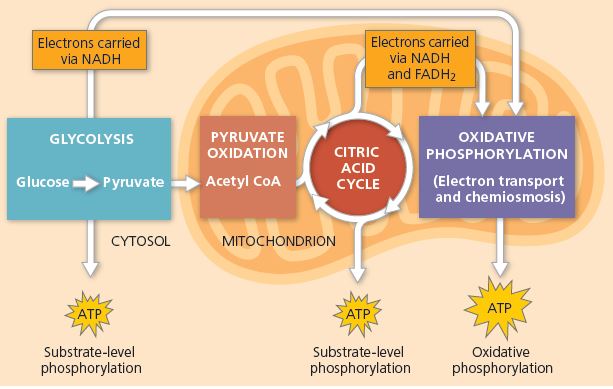- Get link
- X
- Other Apps
- Get link
- X
- Other Apps
Glucose + Oxygen produces Carbon Dioxide + Water + Energy
One molecule of glucose produces 2 Pyruvate + 2H20 + 2ATP + 2 NADH+ 2H+ by glycolysis.
In aerobic respiration, pyruvate will enter the mitochondrion by active transport, where it becomes oxidized to acetyl-CoA by the pyruvate dehydrogenase complex. The oxidation of pyruvate is known as pyruvate decarboxylation.
The equation of pyruvate oxidation:
2 pyruvate + 2 NAD+ + 2 CoA -> 2 acetyl-CoA + 2 NADH + 2 H+ +2 CO2 . This step links glycolysis to the citric acid cycle.
Citric Acid Cycle
Acetyl CoA enters the citric acid cycle for where it becomes further oxidized. This cycle generates 1 ATP per turn of the cycle by substrate-level phosphorylation and also generates high electron carriers NADH and FADH2 that are shuttled to the electron transport chain.
Electron Transport Chain
The electron transport chain accepts electrons from NADH and FADH2 and passes these electrons along the electron transport chain. At the end of the chain, the electrons are combined with molecular oxygen and hydrogen ions (H+), forming water.
Please consult Campbell Biology 10th edition or later. For the 10th edition, p. 162-176 for an in-depth review of cellular respiration.
 |
Figure 1. An overview of cellular respiration. Reprinted from Campbell Biology (p. 167), by J. B. Reece, 2014, Glenview, IL: Pearson. Copyright [2014]
|
- Get link
- X
- Other Apps
Comments
Post a Comment